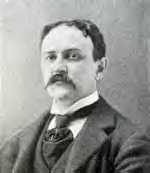Arthur Page Brown (Arthur Page Brown)

Architect. He helped create modern San Francisco. Born in Adams, New York, he apprenticed at Stanford White’s firm of McKim, Mead, and White, and went into business for himself in 1885. He was brought to San Francisco in 1889 by Mary Crocker to design a mausoleum for her husband Charles, president of the Southern Pacific Railroad, at Oakland’s Mountain View Cemetery. This led to a flood of residential and commercial commissions. Brown designed one of the West Coast’s first skyscrapers, the 11-story Market and Post Building (1890), and the California State Building for the 1893 World’s Columbian Exposition. Eschewing the Victorian chi-chi then prevalent in San Francisco, Brown eclectically mixed European and American styles from different eras while retaining formal cohesion and grace. Many of Brown’s buildings were destroyed in the 1906 earthquake, but those that survive have been declared historic landmarks: the Rose Court Building (1890), Trinity Church (1892), which was modeled on England’s Durham Cathedral, and the Swedenborgian Church (1894). His most ambitious project was the magnificent Ferry Building (completed in 1898), a gray Colusa sandstone structure with a 240-foot Spanish clock tower and Roman Revival pavilion. Brown was supervising its construction in October 1895 when the carriage in which he was riding plunged off a 15-foot bridge. The carriage horse, a former steeplechaser, bolted and crushed the architect when they landed. Brown was taken to his Burlingame home, where he died of his injuries three months later. He never saw his finished masterpiece, the Ferry Building, which remains one of San Francisco’s most recognizable landmarks. Originally buried at Laurel Hill Cemetery, Brown was reinterred at Cypress Lawn in 1940. (bio by: Bobb Edwards)
Born
- October, 13, 1859
- USA
Died
- January, 01, 1896
- USA
Cemetery
- Cypress Lawn Memorial Park
- California
- USA

